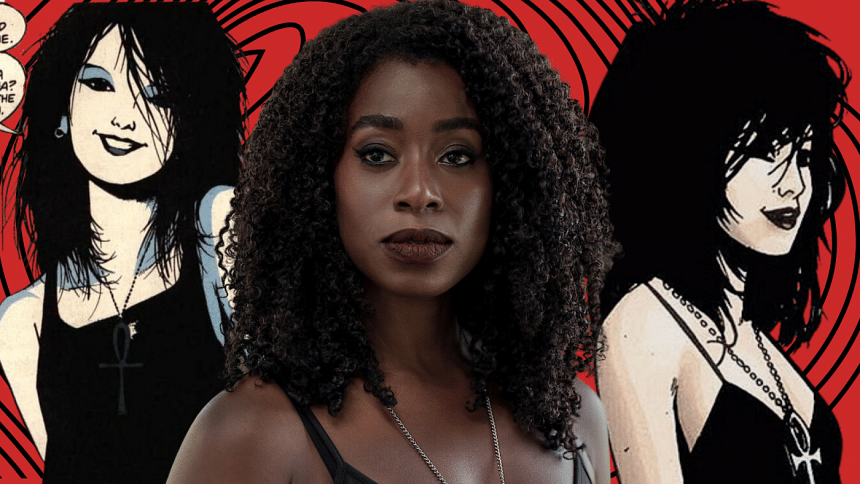The reasons backlash over diverse casting in The Sandman is groundless

When the highly anticipated series adaptation of Neil Gaiman's magnum opus graphic comic book series The Sandman had finally released, many long-time fans objected to the diversified casting of a few iconic characters. Criticisms were levelled against showrunners for casting a black actress in the role of Death and gender-swapping beloved characters like Lucienne, Lucifer, and John Constantine.
Some lashed out that changing their identities is unfaithful to the comics even though the show's sky-high success has been attributed to its scene-by-scene accuracy to the original source material. Others have accused creators of trying to forcefully shove LGBTQ+ rhetoric down viewers' throats.
However, the inclusivity in The Sandman's casting never seemed like an unfaithful attempt at pandering to today's "woke" culture. The comics were well ahead of their time in the sense that their themes are appositive to our current understanding of identities, values, and queer relationships, even though they were rarely addressed in the '80s when the comics were first released.
Death, the oldest of the Endless siblings, played by Kirby Howell-Baptiste in the show, was originally a character with pale skin who donned a gothic white-woman aesthetic. However, the Endless entities are anthropomorphic personifications of abstract concepts that transcend specific human identities. Their appearances could range differently depending on individuals who were looking at them. In Tales in the Sand, the prologue to the comic's second volume and momentarily in the episode titled A Hope in Hell, we are introduced to Dream and Nada's story, which was pivotal to Dream's character arc. Dream's typical physical appearance changes into that of Kai'ckul's, an African man based on Nada's ideal perception of a lover. Nada, who herself was the queen of an ancient tribe, had fallen in love with Dream in his Kai'ckul form when she was alive.
Desire is another Endless who was written as a gender fluid entity in the comics. Mason Alexander Park, who plays Desire and identifies as non-binary, is a perfect onscreen manifestation of the literary character. Mason's androgyny and physical appearance supplements Desire's hijinks. Desire is supposed to be an embodiment of mischief, attraction, fickleness, desires, selfishness, and impulsive choices regardless of a human's gender orientation.
Some enraged fans tried to point out that casting Gwendoline Christie to play the iconic DC character Lucifer in the gender-bent reprise would ruin the sanctity of the comics. However, Lucifer is genderless. In Neil Gaiman's own words, "The original Lucifer didn't have a gender. So merely getting them played by a human character is technically gender swapping them either way." Christie's portrayal of Lucifer is more eloquent and cooler-tempered compared to the comics, which makes the character more sinister and scarier. Additionally, her feminine voice contrasting with her statuesque, androgynous presence, much like her role as Brienne of Tarth in Game of Thrones, aptly translates that brief onto the screen.
Most importantly, diverse representation and performances by the cast in the show do not betray the core concepts or alter the traits of the characters from the original material. We have to remember that the casting decisions were made by the same author whose genius had created these iconic characters in the first place.
Saturation of diverse characters shouldn't pass as an excuse to hate on any adaptation without acknowledging the aspects which the show and actors get right. Audiences should try leaning into the fact that adaptations and original source material reserve rights to be unique in their rendition.
Rant to Nuzha about The Sandman @artexcerpt on Instagram

 For all latest news, follow The Daily Star's Google News channel.
For all latest news, follow The Daily Star's Google News channel. 








Comments